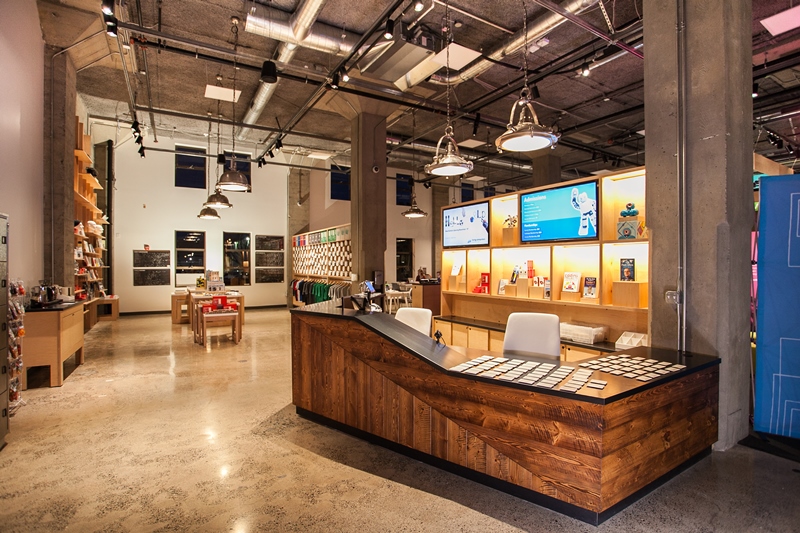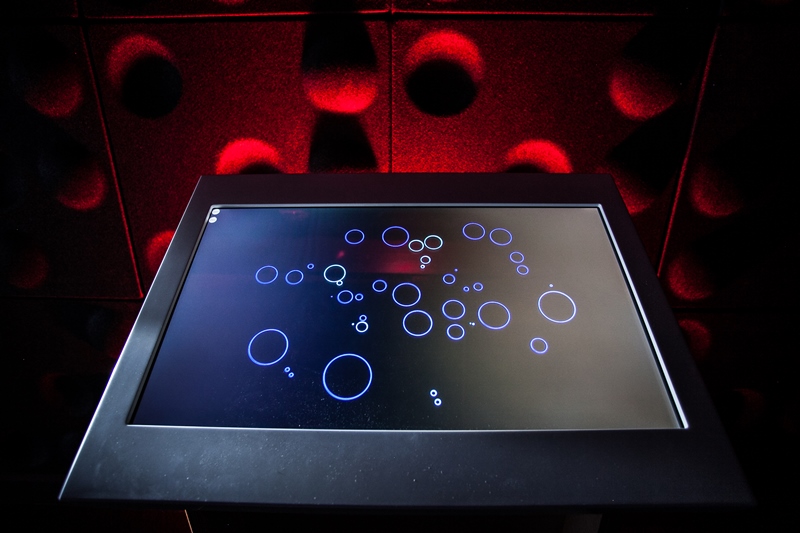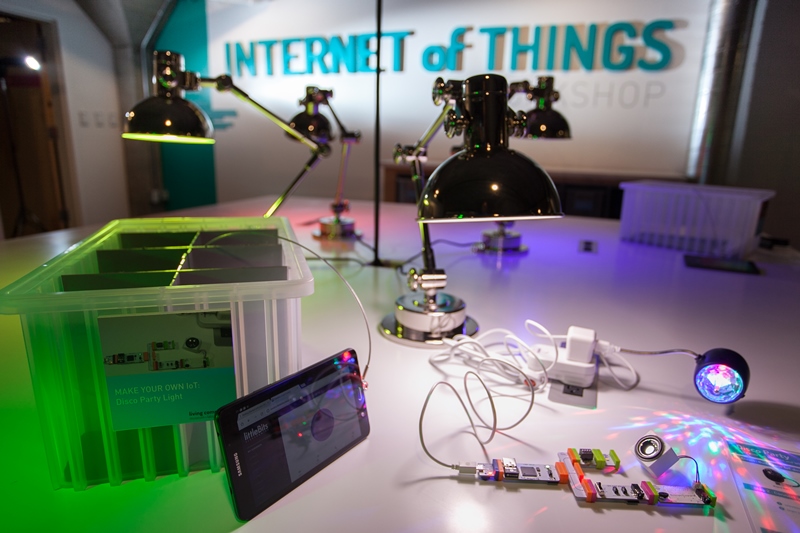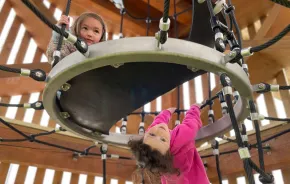
In 2012, Paul Allen founded the Living Computer Museum to preserve the history of computer technology. Reflecting the fast pace of change in the technology sector, the little-known museum has already undergone its first major reinvention. What started as a vintage computer collection has been completely redesigned as a series of labs that will host workshops on coding, hardware development and more.
Renamed Living Computers: Museum + Labs to emphasize the hands-on focus of the facility, Living Computers has also renovated its gallery of exhibits to present technology in the context of real-world issues. This museum opens its revamped space on Friday, Nov. 18.
What’s new
The revamped exhibition space features robots, artificial intelligence (not the same thing), virtual reality, self-driving cars and digital art. All of the displays are genuinely interactive and available for play. Running through March 26, 2017, the inaugural temporary exhibition is [ed]tech, which takes a look at the first 50 years of educational technology.
“We projected the old video game Oregon Trail on the wall so that playing it is a social experience,” curator Aaron Alcorn says. If Oregon Trail isn’t your style, you can play around on a teacher’s touchscreen computer from the 1960s.

They really mean ‘hands on’: supercomputers and more
Uber-geeks will probably want to head to the second floor to see the world’s largest collection of operating vintage computers. While some of the computers are behind ropes to prevent electrical shocks, many of them are equipped with chairs and ready for use, so you can play chess (with real pieces) against a computer if you like.
A special, cooled room houses the museum’s masterpiece — the last operational CDC 6500 supercomputer in the world. One of only 100 ever made, the supercomputer was wired entirely by hand and cost $8 million when it was new. (If your kids get excited by these old computers, may I suggest you buy them a copy of Ready Player One by Ernest Cline and read it together?)
One caveat: To get the full experience, there is a lot of text to process, including interpretive placards with Bluetooth hyperlinks that control objects on display. But the museum was deliberately designed to have something of interest for all ages and skill levels. Rather than aiming for the full experience, parents should be willing to spend time wherever they and their kids find something interesting. “We really wanted to make sure younger siblings had enough to enjoy,” Alcorn says.
Younger kids will be drawn to magnetic building blocks that respond to your hands; Baxter the kinesthetically programmed robot, which requires no reading; and Dash, a blue robot of BB-8-level cuteness teaches kids as young as age 5 to program.

Let kids explore, says Alcorn. “This is a petting zoo for geeks. ... Yes, computers crash, and it’s no big deal. That’s why we have eight engineers working here to fix them. We try to trust the visitor and give them a positive experience. The most disappointing thing I could see would be a parent pulling a child away from something that interests them."
Couches are scattered throughout the exhibit space so that parents have a place to relax when their little ones get sucked in. If they aren’t into robotics, they might lose themselves in the game-maker space, working on Minecraft mods and experimenting with professional-level game development software. Or they could spend an hour tinkering with the Internet of Things, setting up small systems like lights and fans that are controlled by a tablet.
Safe space: non-geeks welcome
Another note: It’s okay if you, like I did, have to ask what the Internet of Things means. Living Computers is designed to be a safe space in more ways than one. There is only one entrance, so parents can let kids wander a little without worrying that they will get lost. And the big robot Baxter is programmed to stop moving when someone stands close enough to get bumped.
But it is also a safe place to admit how much you don’t know. Docents are on hand to answer questions and provide valuable context that may not be immediately obvious. Their enthusiasm is genuine and infectious — as valuable to the museum experience as the tech on display. Don’t hesitate to ask questions, even — especially — the stupid ones.
Education for all
Finally, the museum is planning a number of education programs. It recently hired Nina Arens as its education coordinator, and has an early learning program in the works. “We want kids to think about what it means to be part of scientific culture. We want to break stereotypes about who does science and show that computer science is more than just coding,” Arens says.
Through the displays and programming, the museum encourages everyone to feel welcome in tech in ways both subtle and overt. Women, for example, are well-represented in historical photographs and on the staff. On Dec. 1 a showing of the documentary Naledi: A Baby Elephant’s Tale will show the connection between technology and environmental conservation, while a celebration of Ada Lovelace’s birthday on Dec. 10 reminds everyone that the world’s first computer scientist was a woman. (Find detail on events on Living Computers' calendar.)
Permanent exhibits demonstrate how technology is useful to artists, teachers, storytellers and a host of other people who may not relate to the label “geek.” A growing curriculum of field trips, workshops, hackathons, family events and eventually, camps will target an ever-broadening audience.
If you go ...
Where: 2245 First Ave. S., Seattle WA 98134, between Safeco Field and Starbucks Headquarters on First Avenue South. Parking is free onsite!
When: Wednesdays through Sundays 10 a.m.–5 p.m.; First Thursdays 10 a.m. – 8 p.m. They are closed Mondays and Tuesdays and on Thanksgiving and Christmas days.
Grand opening: Friday, Nov. 18, noon–5 p.m.
Cost: General admission $12; ages 0–5 free; senior/military $10. Admission is free after 5 p.m. on First Thursdays. Family memberships cost $60. If your family utilizes any form of public assistance, you may be eligible for $1 admission.
Info: livingcomputers.org











